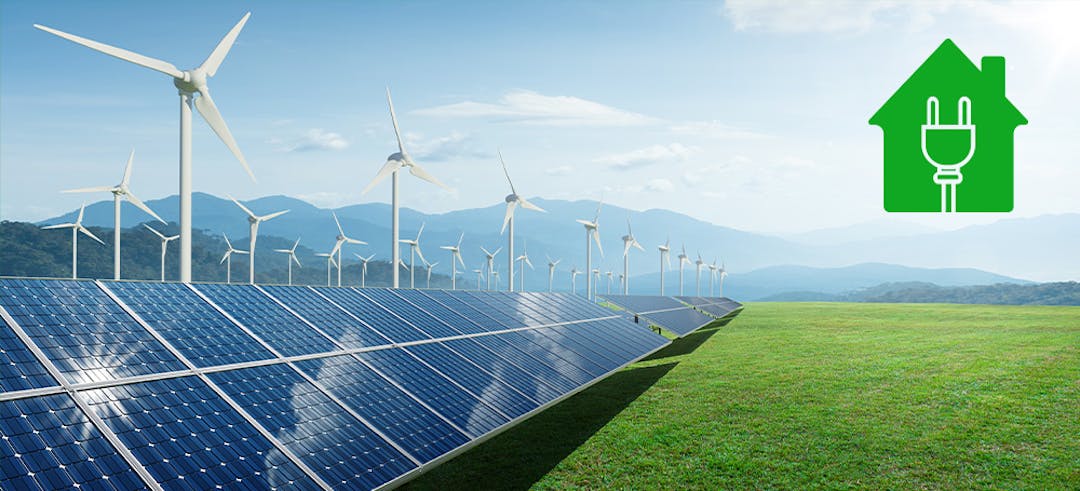Building Electrification

Background
The Washington State Energy Code (WSEC) establishes statewide standards to ensure that new buildings (and major renovations of existing buildings) in Washington use energy as efficiently as possible. Approximately every three years, the Washington State Building Code Council (SBCC) updates the state’s energy code to incorporate the latest technologies into new buildings, and continue progress towards state targets for energy efficiency and fossil fuel-free new construction.
The most recent version of the energy code, the 2021 Washington State Energy Code (2021-WSEC), became effective on March 15, 2024. This update will improve the energy performance of new construction and leverages an electric-preferred approach that incentivizes, but does not require, building electrification. While this code update will help reduce greenhouse gas emissions from new commercial buildings, it will not completely eliminate emissions from new buildings.
What’s Happening?
The City of Olympia is considering local amendments to the commercial State Energy Code, which would exceed the state minimum requirements, to further incentivize electrification of commercial buildings in Olympia. If adopted by City Council, the proposed code amendments would become effective on January 1, 2025.
The proposed code amendments were developed in coordination with energy code experts from the New Buildings Institute (NBI) and affected stakeholders, including local design, construction, and restaurant professionals.
- For a high-level overview of significant proposed changes, please see the Olympia Commercial Energy Code Amendments Fact Sheet.
- For more information on the proposed code amendments, including detailed explanations of proposed code changes, please see Olympia Commercial Energy Code Amendments (Version 2).
What this Proposal Does:
The proposed code amendments would incentivize, but not require, building electrification for most new commercial buildings and alterations in Olympia.
What this Proposal Doesn’t Do:
The proposed code amendments do not prohibit the use of fossil fuel equipment, such as natural gas heating or cooking appliances.
The proposed code amendments only apply to new construction and alterations regulated under the commercial building code. The proposed code amendments will not affect any construction regulated under the residential building code, which includes:
- Single-family homes;
- Duplexes;
- Townhomes, and
- Multifamily buildings that are three stories or less and have units accessed from exterior walkways.
Note: A previous draft of the proposed code amendments included provisions that mandated all- and mostly- electric buildings in Olympia. The current version of Olympia’s proposed commercial energy code amendments has been revised to comply with the new standards for electrification in building codes established by the Ninth Circuit Court and to align with the new requirements and terminology in the revised version of the 2021-WSEC.
Why are we doing this?
In February 2021, Olympia, Lacey, Tumwater, and Thurston County accepted the Thurston Climate Mitigation Plan (TCMP) as the regional framework to substantially reduce local contributions to climate change. The TCMP provides a roadmap to reduce community-wide greenhouse emissions 45% below 2015 levels by 2030 and 85% below 2015 levels by 2050. The TCMP identifies building electrification as a key strategy to achieve these climate goals.
In 2021, greenhouse gas emissions in the Thurston County region were about 2.9 million metric tons of carbon dioxide equivalent (MTCO2e). After several years of increasing emissions, 2021 emissions were below the 2015 baseline. However, emissions are still not on track to meet the 2030 and 2050 regional targets. The built environment, including the consumption of electricity and natural gas to power, heat, and cool our buildings, is the largest source of regional greenhouse gas emissions (54% in 2021). After electricity, natural gas represents the second largest source of greenhouse gas emissions from the built environment in the Thurston region (more than 20% in 2021).
The proposed commercial energy code amendments would support a long-term reduction in greenhouse gas emissions by further incentivizing the electrification of new commercial buildings and alterations; and by ensuring that commercial buildings with fossil fuel infrastructure are “electric-ready” to enable future electrification retrofits.
How will building electrification help?
Building electrification means using electricity, rather than fossil fuels such as natural gas, for space heating, water heating, and cooking in homes and buildings. As electricity is increasingly produced by non-emitting, renewable sources, such as wind and solar, replacing fossil fuel use in buildings with efficient, all-electric buildings will substantially reduce greenhouse gas emissions from buildings.



